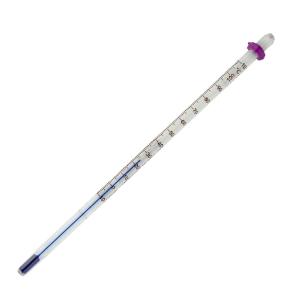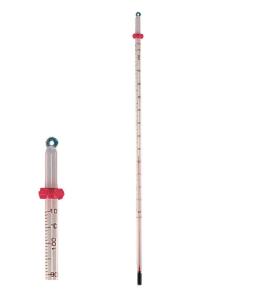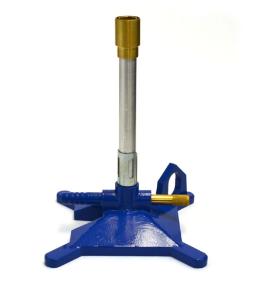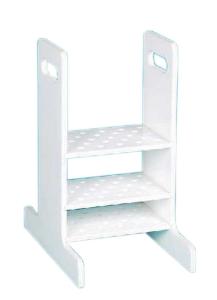4 Proven Methods to Rejoin Thermometer Fluids
Middle School / High School
Got separation anxiety?
Separation in a thermometer’s liquid column is a common source of annoyance in the lab. All thermometers can separate in the lab or during shipping due to vibrations, shocks, and even internal evaporation, especially if stored flat (horizontally). Fluid separation is the leading cause of precision thermometer failure and inaccurate readings. But don’t be too hasty about tossing out this vital instrument! No matter how it occurred, you can rejoin the separated fluid column by meticulously following one of the four methods described below.
Methods to Rejoin Separated Thermometer Columns
- Tapping: hold the thermometer upright (vertically), grasping around the separated area, then gently tap the bulb of the thermometer in a vertical direction on a soft surface, such as a thin foam mat. The idea is to shake the fluid to slide down into the thermometer physically. Suitable for both mercury and spirit thermometers.
- Spinning: similar in principle to tapping, you can spin your thermometer to push the fluid down by tying a string to the loop on the top end and spinning your thermometer like a lasso. Be careful not to spin too fast or too forcefully, as the glass loop on the end could break. Be aware of your environment if you try this method to prevent anyone from getting hurt if the glass loop breaks. Alternatively, you could place your thermometer into an empty two-liter plastic soda bottle and tie the string around the bottle nozzle. This is not recommended for mercury thermometers in case of breakage.
- Cooling: immerse the thermometer’s bulb in an environment well below sub-zero. Ice water won’t be cold enough, so you may want to use dry ice mixed with alcohol. The liquid drawing into the bulb gets rid of air bubbles (as long as the temperature of the bulb environment is well below the lowest temperature reading on the thermometer). When all the liquid has been drawn into the bulb, let the thermometer return to room temperature in a vertical position (prop it in a rack, tube, or beaker). You can also use this method for mercury thermometers.
- Heating: glass thermometers have a small space at the top end of the thermometer beneath the glass loop, which serves as an expansion chamber. Heat the thermometer slowly (so as not to overheat it) until the solid-liquid in the thermometer reaches the expansion chamber, thus pushing all bubbles into the expansion chamber. As soon as the solid portion of the liquid reaches the expansion chamber, remove the thermometer from the heat and let it cool to room temperature in a vertical position (take care not to let the thermometer touch the pan directly). Since boiling water won’t get hot enough, you may need to use hot oil or an open flame. You can use a Bunsen burner and pass the thermometer over the flame in strokes to reach the desired temperature without overheating or inserting the bulb into the flame. The temperature needs to exceed the maximum temperature reading on the thermometer scale, but be careful not to heat the thermometer too quickly: the liquid should not fill the expansion chamber completely, as this may cause the thermometer to shatter as pressure builds. The expansion chamber should not be filled more than two-thirds. If the bubble is too low in the column for this method, try another method first. This heating method is indicated for spirit thermometers.
You can extend your thermometer’s life by using any of these methods. When thermometer liquids are reunited, it feels so good; hey, hey!
Recommended Products
[StartProductBlock]

VWR® PFA Safety-Coated Liquid-In-Glass Thermometers
Mercury-free thermometers ideal for use in chemical laboratories, universities, scientific institutions, food and beverage processing, petrochemical laboratories, pharmaceutical/medical industry, manufacturing, dairies, breweries, and distilleries.
[EndProductBlock]
[StartProductBlock]

Mercury-Free Celsius Scale Spirit Thermometer, Thermco®
Mercury-Free Alternative Celsius Thermometer
[EndProductBlock]
[StartProductBlock]

Bunsen Burner with Flame Stabilizer and Gas Adjustment
Air and fuel adjustments and throttle control. Flame stabilizer comes standard. Available in natural gas and liquid propane variants.
[EndProductBlock]
[StartProductBlock]

Thermometer Rack
Convenient and autoclavable. Holds up to 25 thermometers.
[EndProductBlock]
